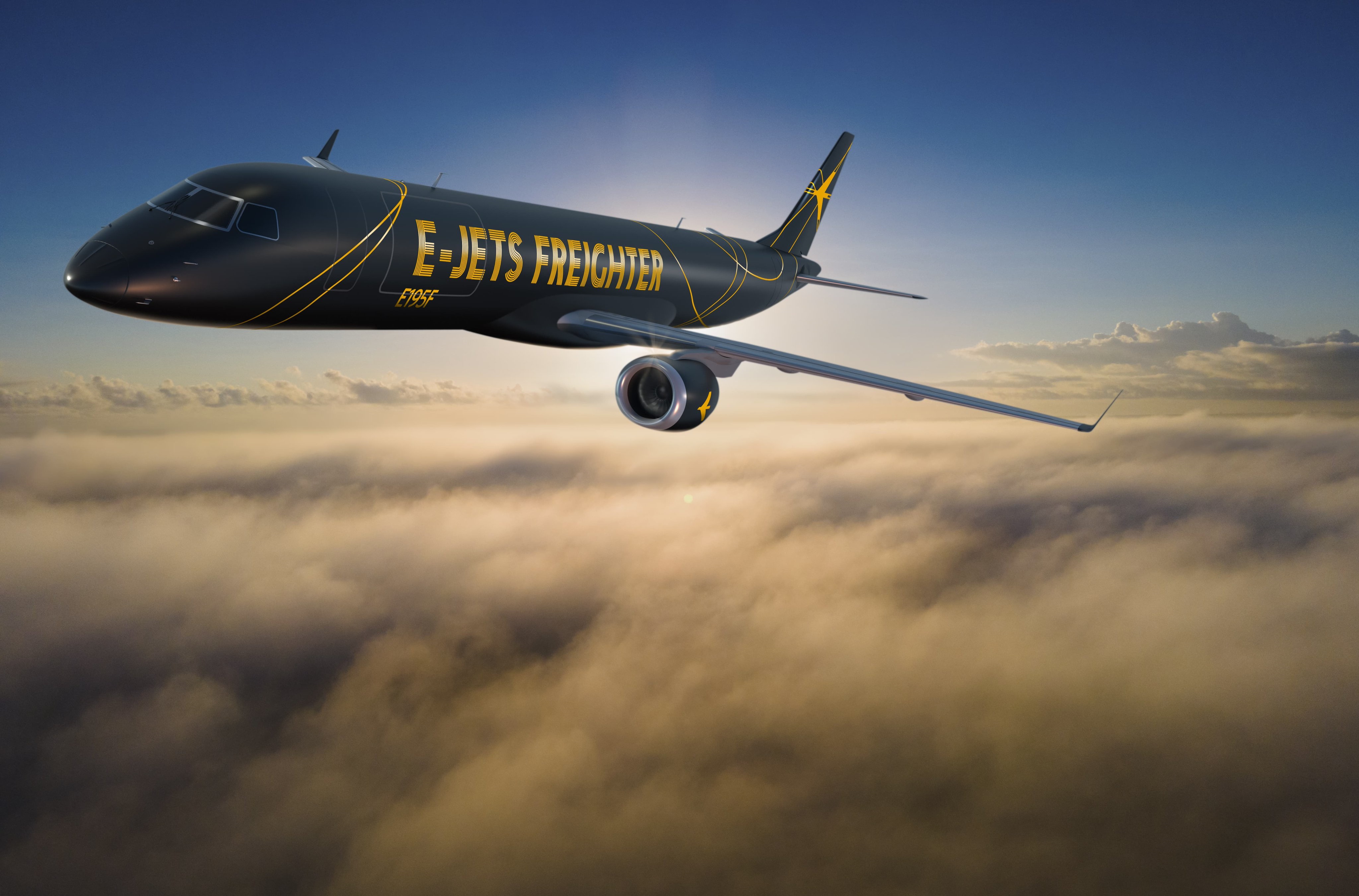


After halting the ambitious E175-E2 jet development program , next big news that emerged from the Embraer is , they are into freighters , more specific - into conversions , atleast for now !
We can put it this way , Embraer could not resist the Cargo market Allure and today it entered the air freight market with the launch of the E190F and E195F Passenger to Freight Conversions (P2F).
The E-Jets freighters are designed to meet the changing demands of e-commerce and modern trade that require fast deliveries and decentralised operations.
Embraer Quotes,
"Embraer is offering the unbeatable cargo economics and flexibility that rightsized jets provide."
“Perfectly positioned to fill the gap in the freighter market between turboprops and larger narrowbody jets, our P2F E-Jet conversion hits the market as the demand for airfreight continues to takeoff, and as e-commerce and trade in general undergoes a global structural transformation,” said Arjan Meijer, President and CEO Embraer Commercial Aviation.
The full freighter conversion is available for all pre-owned E190 and E195 aircraft, with entry into service expected in early 2024. Embraer sees a market for this size of airplane of approximately 700 aircraft over 20 years.
This initiative comes as Embraer addresses three major opportunities:
► Current small narrowbody freighter airframes are aged, inefficient , highly polluting, and well within their retirement window;
► The ongoing transformation of the intersection between commerce, trade, and logistics, has led to unprecedented demand for airfreight across the board, and more so for same day deliveries and decentralised operations; the perfect mission for E-Jet sized freighters;
► The earlier E-Jets that entered service around 10-15 years ago are now emerging from longterm leases and beginning their replacement cycle, continuing over the coming decade.
The full cargo conversion will extend the life of the most mature E-Jets by another 10 to 15 years, and encourage their replacement with more efficient, more sustainable, and quieter aircraft. Embraer’s E-Jet P2F conversions will deliver headturning performance and economics.
The E-Jet Freighter will have over 50% more volume capacity, three times the range of large cargo turboprops, and up to 30% lower operating costs than narrowbodies.
“The E-Jet air freighters will provide fast, reliable, and cost effective service to freight forwarders, extend the revenue earning life of E-Jets, support E-Jets’ asset values, and create a strong business case encouraging the replacement of earlier aircraft with modern, more efficient, passenger aircraft,” said Johann Bordais, President & CEO, Embraer Services and Support.
“With more than 1,600 E-Jets delivered globally, customers of this new freighter segment will benefit from well established, mature, global services network, in addition to a comprehensive portfolio of products ready to support their operation from day one.”
The conversion to freighter will be performed at Embraer’s facilities in Brazil and work scope includes:
You may like to read...
